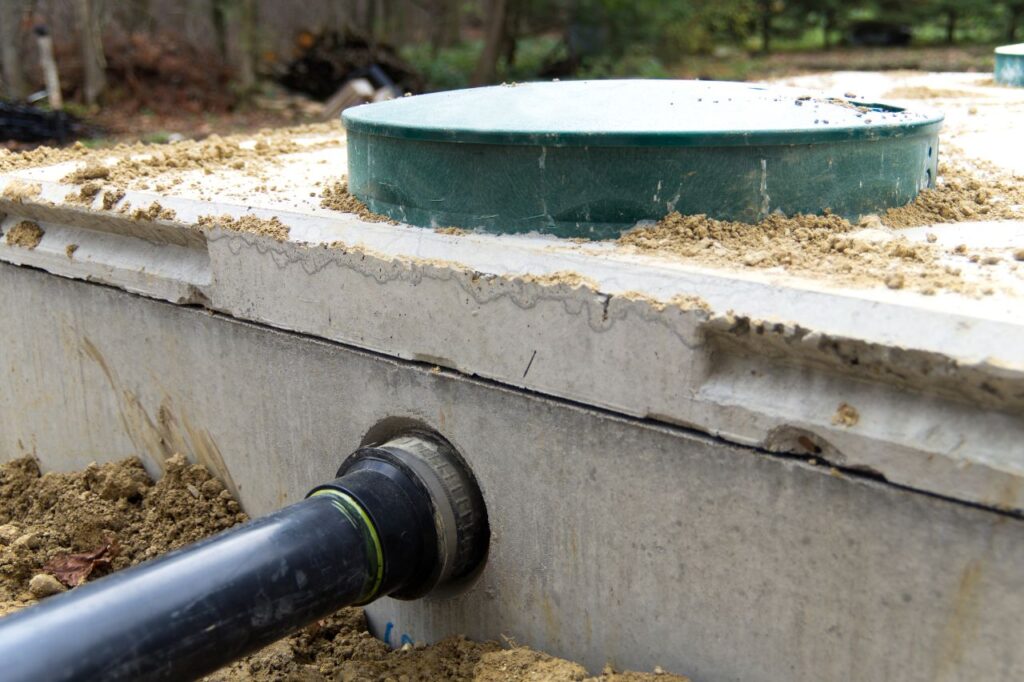A concrete septic tank offers several advantages compared to other materials, making it the preferred choice for homeowners who want a durable and long-lasting system. Learn more about the benefits of choosing a concrete septic tank, as well as important installation considerations.
Durability
Concrete septic tanks are extremely durable, with the potential to last up to 50 years. This makes them a great choice for homeowners who want an investment that will pay off over time, as well as for those who live in areas prone to extreme conditions such as flooding or high winds. The concrete is highly resistant to any chemical leaks from nearby hazardous sites and can even protect your tank from tree roots. Concrete septic tanks are also built with steel sidewalls and bottom support bars which help increase stability.
Corrosion Resistance
Concrete septic tanks are extremely resistant to corrosion and can’t be damaged by any of the chemicals found in sewage sludge. This is because they’re made with materials that won’t erode or rust even after prolonged exposure to water or other elements. Additionally, concrete is impervious to most insect infestations, meaning your tank won’t suffer any structural damage due to critters.
Flexibility in Design and Layout Options
As an added bonus, concrete septic tanks provide more flexibility in design and layout options than any other material. They can be made to fit many different types of installations, from low profile to large capacity models. This makes them ideal for retrofits as homeowners don’t need to worry about trying to find a tank that will fit their existing plumbing setup.
Low Maintenance Costs
Concrete septic tanks are designed to last a long time and require little maintenance, which helps to save you money in the long run. These tanks are built with reinforced concrete that can withstand wear and tear over time and won’t be corroded by certain types of soil or waste material like other materials may be. The inner surface is sealed to prevent the buildup of solids, which reduces the need for excessive cleanings.
Complete Sealing Ability for Environmental Protection
Concrete septic tanks have the ability to completely seal any waste materials, ensuring that there are no leaks and protecting your surrounding environment. The concrete is specially formulated to ensure a tight seal that won’t leak when exposed to liquids or other substances. This means you don’t need to worry about wastewater seeping into your water source, which could contaminate the area if not addressed properly.
Concrete Septic Tank Maintenance
Concrete septic tanks can provide a reliable and long-lasting solution for storing and processing wastewater if their maintenance is kept up. In this article, we’ll give you three easy tips to help maintain your concrete septic tank for the best possible performance and to ensure safety.
Pump Your Concrete Septic Tank Regularly
It is critical to ensure that your concrete septic tank is pumped regularly in order to prevent solids from accumulating. The frequency of pumping will depend upon the size and volume of the tank, so it is important to consult a professional to determine the best schedule for maintenance and pumping. Generally, concrete septic tanks need to be pumped out every two to four years on average depending on the local guidelines.
Inspect the Septic Tank for Damage or Cracking
As part of regular maintenance, it’s important to check the septic tank for any signs of damage or cracking. It is best practice to have a professional inspect the septic tank at least once every two years to ensure that there are no issues with the structure. If any cracks or holes are detected, they should be repaired immediately by a qualified contractor in order to prevent leakage into the surrounding environment.
Check and Replace Any Vanishing Parts or Plumbing Connections
It is important to inspect all the parts of your concrete septic tank in order to identify any damage or degradation. Pay special attention to the outlets and pipes connected to the tank because these tend to get weaker overtime due to wear and tear. If there’s any sign of rust or damage, it’s time for a replacement. Make sure that you add some waterproof sealer around them before reconnecting them for optimal performance.
Monitor for Leaks
An ongoing issue with concrete septic tanks is the occurrence of leaks. If a leak occurs, not only will it be an inconvenience, but it can also cause significant damage to your property. To reduce the chances of having a leak, regularly inspect the outlet pipes and connections for any signs of damage or rust and repair them or replace them if needed. Additionally, always ensure that there’s enough water in the tank to prevent it from drying out and cracking due to heavy use or hot weather.
Clear Away Debris and Roots
To keep your concrete septic tank in top condition, you should clear away any debris or tree roots that may be growing near and around the tank. If the roots get inside, they can cause long-term damage, so it is important to take action swiftly. Additionally, be sure to remove all excess dirt and mud from the surface to prevent blockages and backflow inside of the septic system.

